Having arrived at the Novosibirsk Railway Station about an hour before our next train was scheduled to depart, we hung out in the Priority Pass lounge for an hour in order to kill some time.
Yes, you read that right – Priority Pass has a handful of lounges in train stations around the world in addition to airports, and the Novosibirsk location even treated us to a few complimentary snacks and sandwiches to take away for our journey.
Around 5:30am local time, our train pulled into the station and we headed up to the platform. The sun had come up by this point, bathing the station’s baby-blue exterior in a beautiful sheen of light.
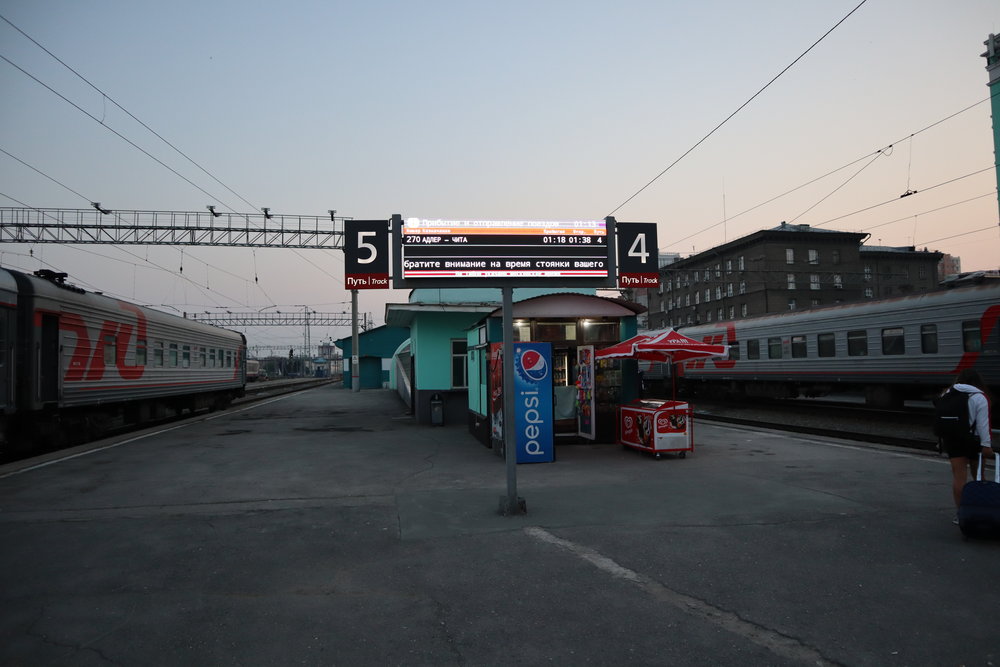
Novosibirsk Railway Station
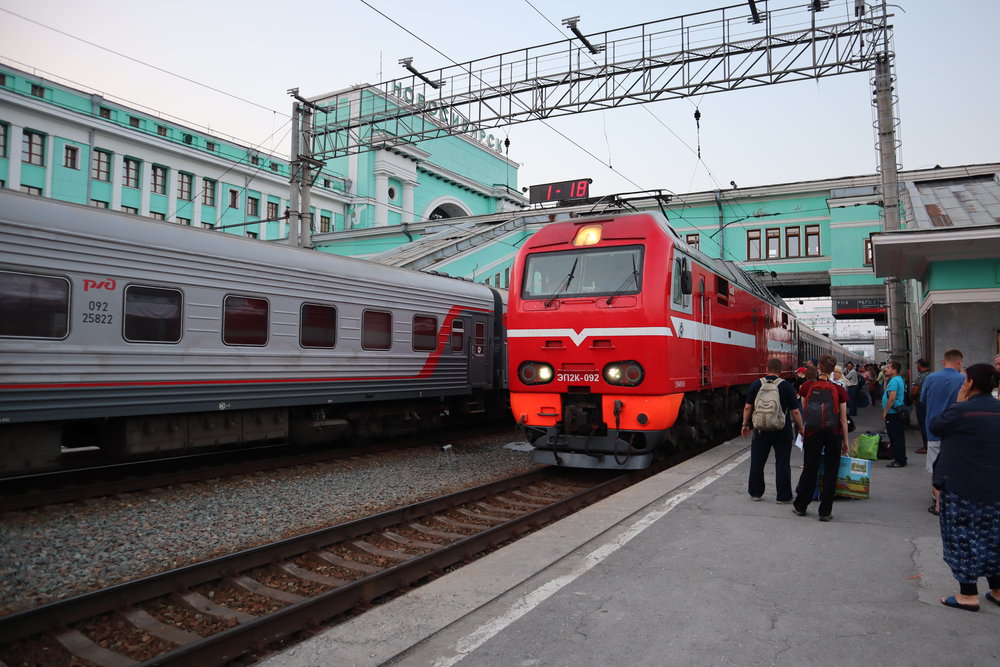
Trans-Siberian Railway – Train #270
This time, instead of heading for the exclusive First Class train carriage as we had done so on our previous journey, we gathered alongside the masses and hustled onboard Coach #3, one of the many Third Class carriages.
Trans-Siberian Railway | Russian Railways Train No.270
Cabin: Third class
Route: Novosibirsk to Irkutsk
Date: Thursday, July 12, 2018
Time: Departing 5:38am and arriving 1:30pm the next day
Duration: 30 hours 52 minutes
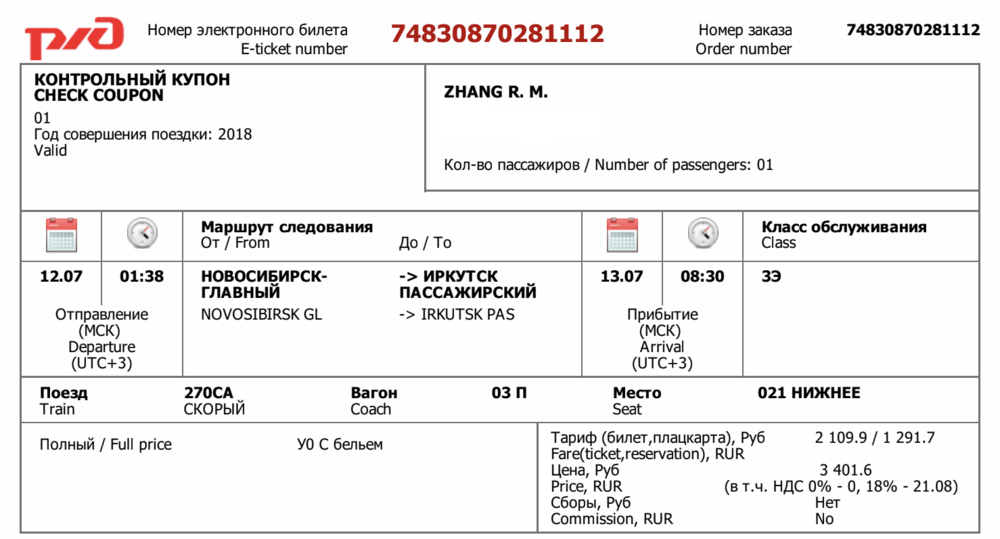
Unlike First Class and Second Class trains, Third Class carriages are entirely open-concept, and there is no privacy among any of the compartments. As soon as you get on the train, you’re shuffling through the open train carriage, fully exposed to everything that’s going on with fellow passengers around you.
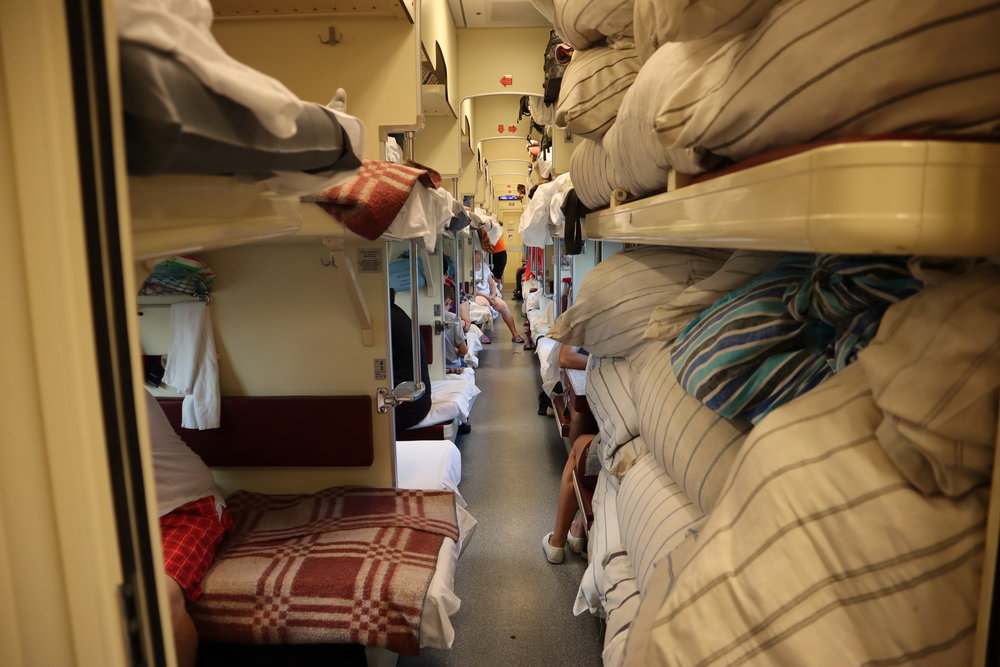
Trans-Siberian Railway Third Class – Corridor
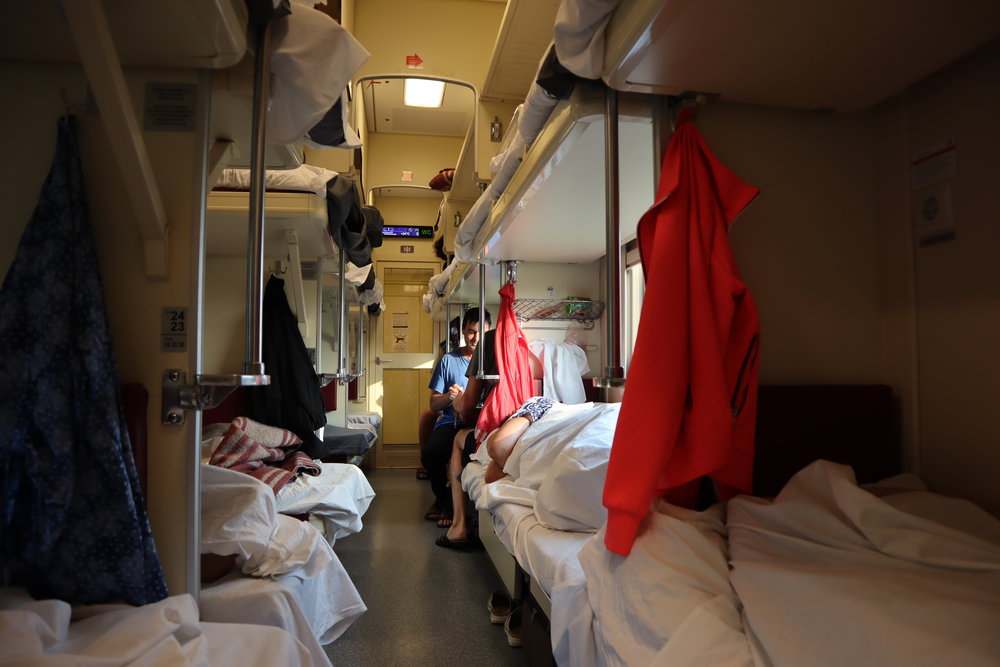
Trans-Siberian Railway Third Class – Corridor
As we took in our surroundings, we weren’t exactly feeling thrilled about the upcoming 31-hour train ride as we made our way to Berths 21 and 22.
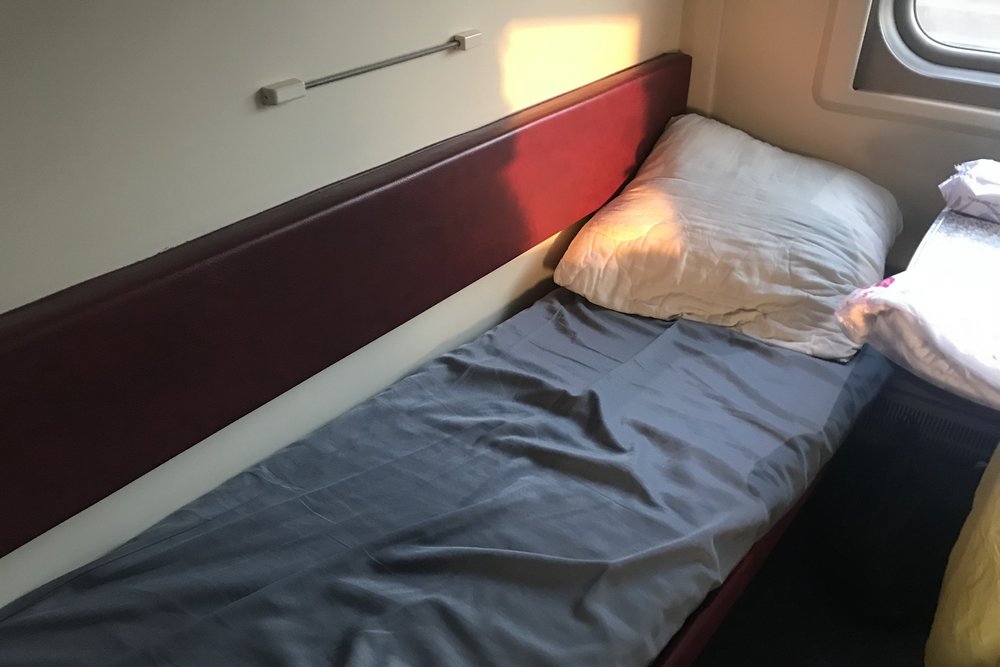
Trans-Siberian Railway Third Class – Berth 21 (left)
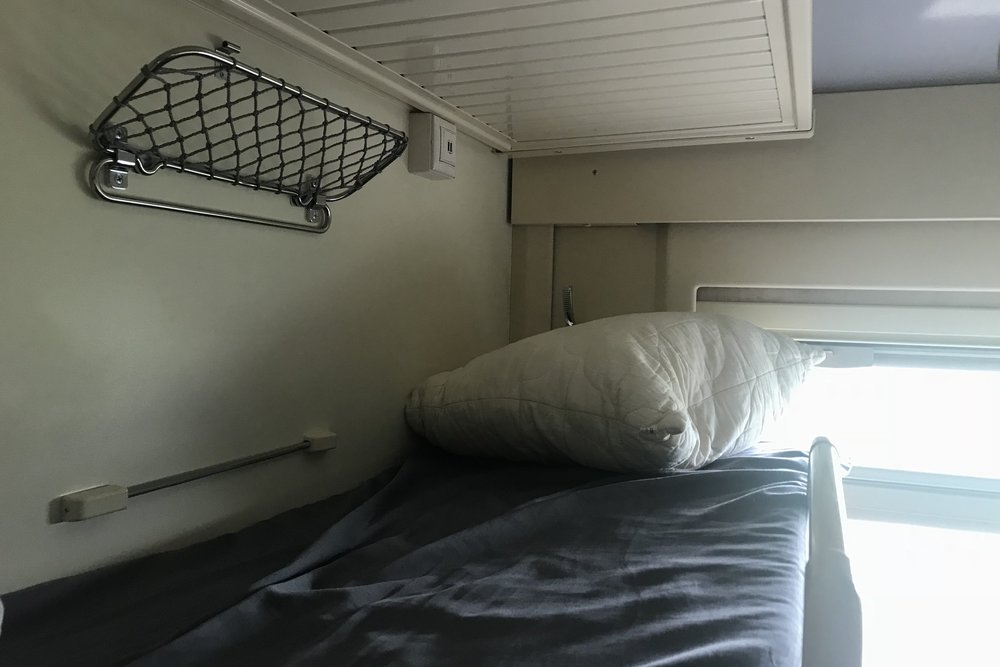
Trans-Siberian Railway Third Class – Berth 22
Each Third Class compartment on these Russian trains consists of six berths in total, arranged across top and bottom bunks along three separate walls. Four of the six berths are located “within” the compartment itself.
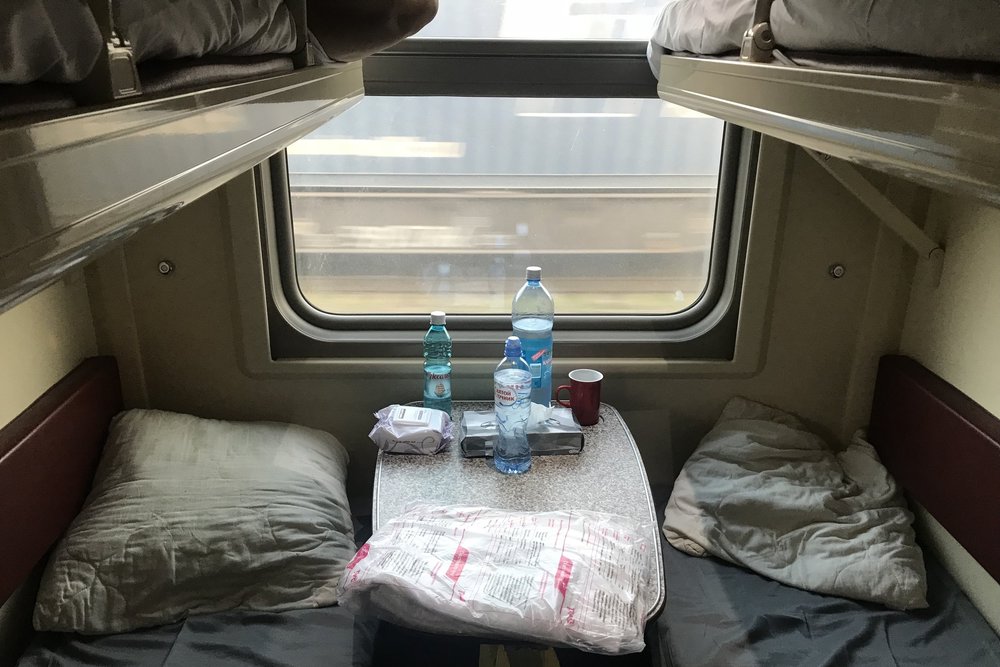
Trans-Siberian Railway Third Class – Compartment with four bunks
Then, two more compartments are found along the opposite wall of the train. During the daytime, the bottom bunk here gets converted into a seating area for two people, with the middle of the bed popping upwards to serve as a table.
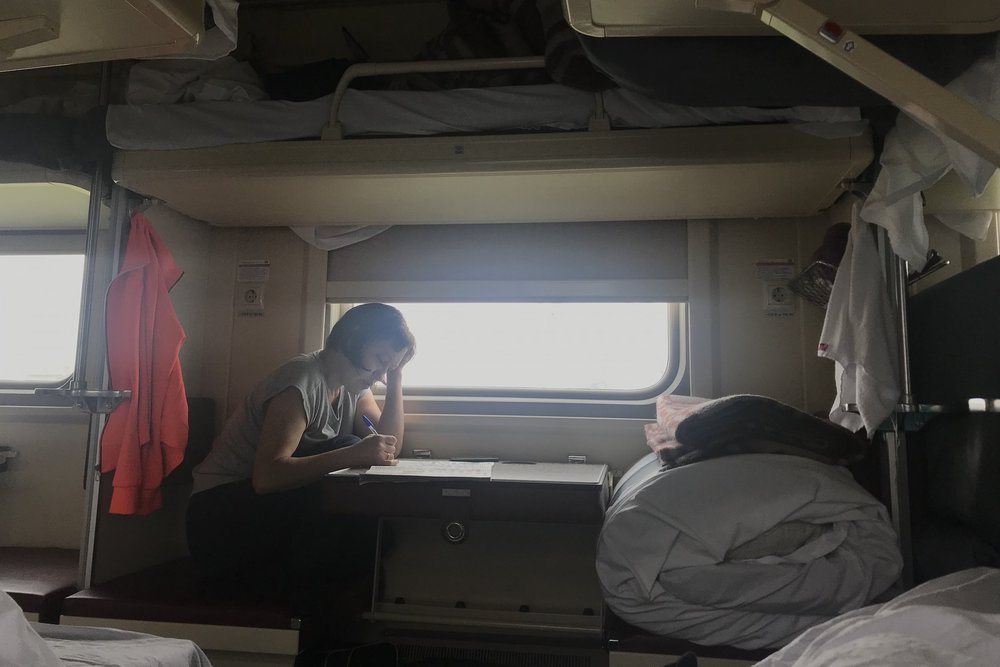
Trans-Siberian Railway Third Class – Lower side bunk
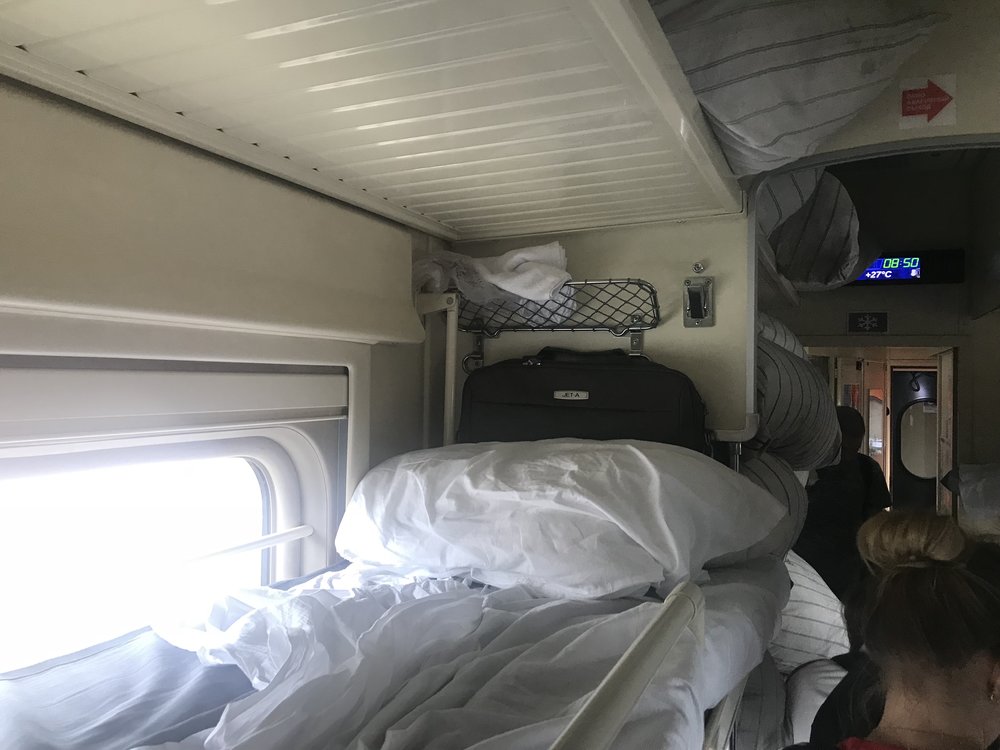
Trans-Siberian Railway Third Class – Upper side bunk
The train corridor runs between the four bunks within the compartment and the two bunks located flush against the train walls. Since everything is open-concept, there are no compartment doors.
Underneath each bottom bunk is enough storage space for two suitcases. Note that the bunks themselves must be raised in order for larger items to be placed underneath, which means they’re in hotter demand compared to the top bunks. If travelling as a couple, I’d recommend booking two bunks within the compartment right on top of each other, which would allow you to store all your belongings under the bottom bunk without having to trouble other passengers.
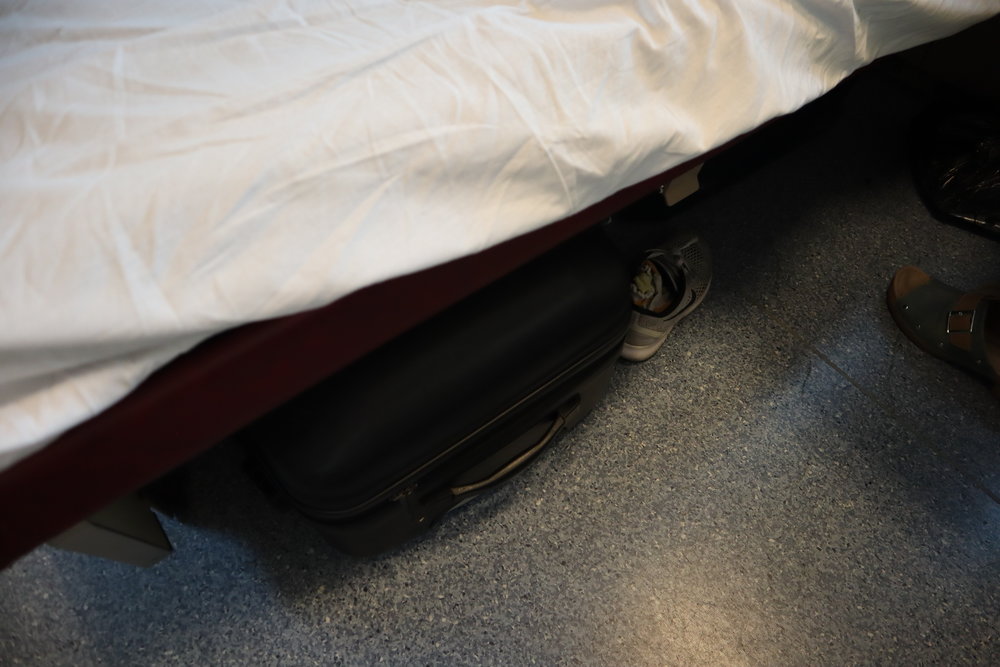
Trans-Siberian Railway Third Class – Storage underneath lower bunk
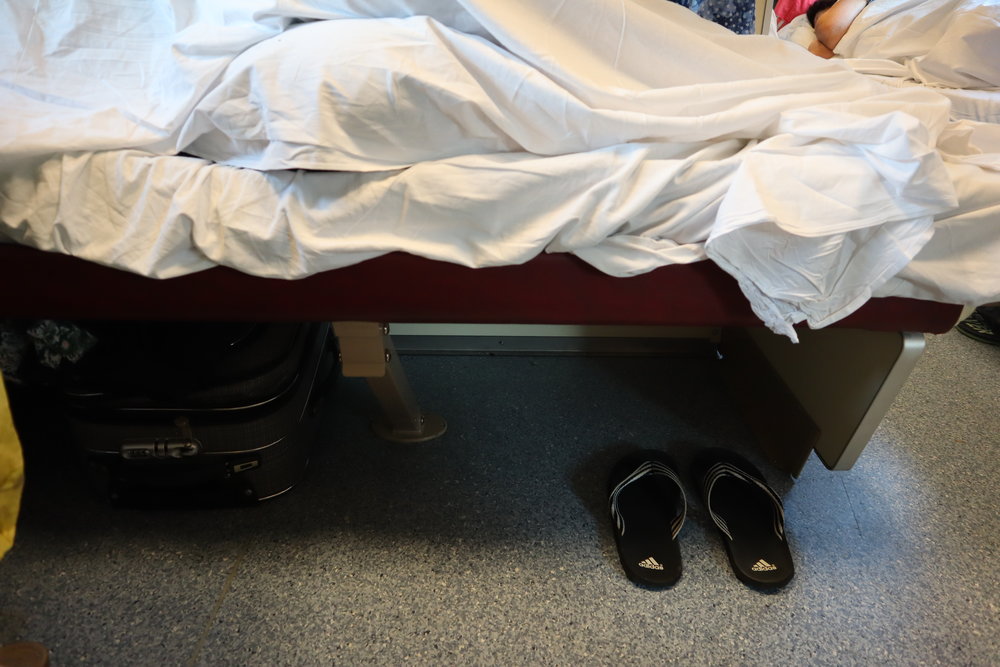
Trans-Siberian Railway Third Class – Storage underneath lower bunk
If you have additional baggage, there’s also plenty of space on the ledge above the top bunk. In fact, there’s totally enough space up here to serve as a third layer of bunks, but I don’t want to imagine the overcrowding on the train that would result!
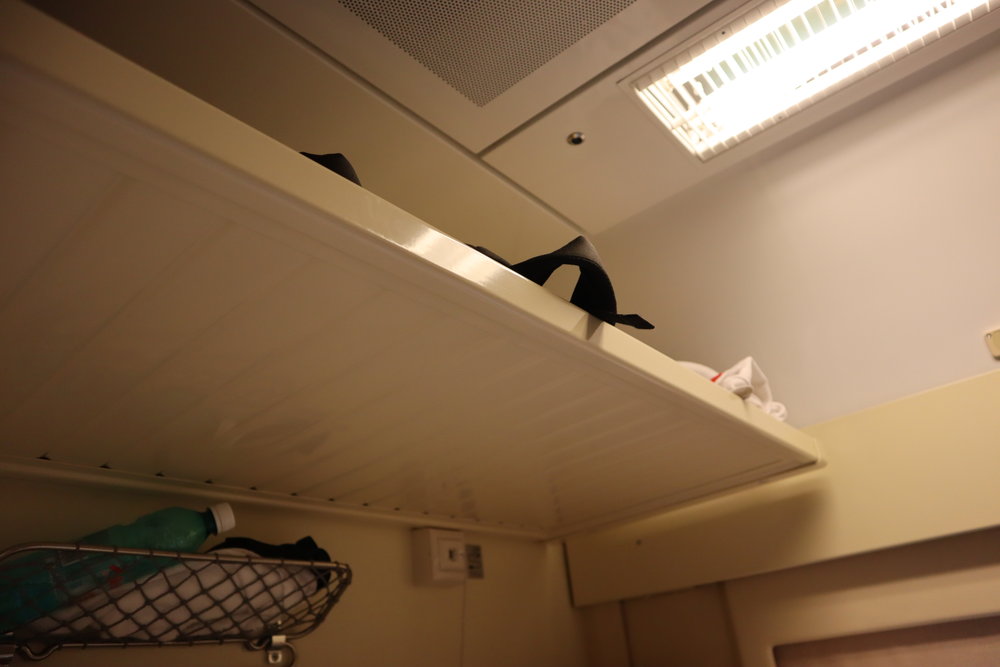
Trans-Siberian Railway Third Class – Storage above top bunk
Meanwhile, I’d recommend avoiding the two bunks along the walls of the train if you can help it. They definitely seemed a bit tighter in terms of the overall space you have, and you’re also more exposed to the train corridor when you’re sleeping, which can be quite bothersome as people get on and off the train in the middle of the night.
Jessica and I arrived at our berths to find some pre-packaged bedding and towels awaiting us. Our beds had already been made for us upon our arrival back in First Class, but now that we were Third Class citizens, we had to make our beds ourselves.

Trans-Siberian Railway Third Class – Bedding
The bedding comes in the form of a pillowcase plus two thin sheets – one to use as a mattress sheet and another to use as a blanket. It never got too cold onboard the train, so that wasn’t a problem.
The Third Class berths are pretty bare-bones in terms of their features. Each berth comes with a few nets that can be folded downwards, which are good for holding loose items.
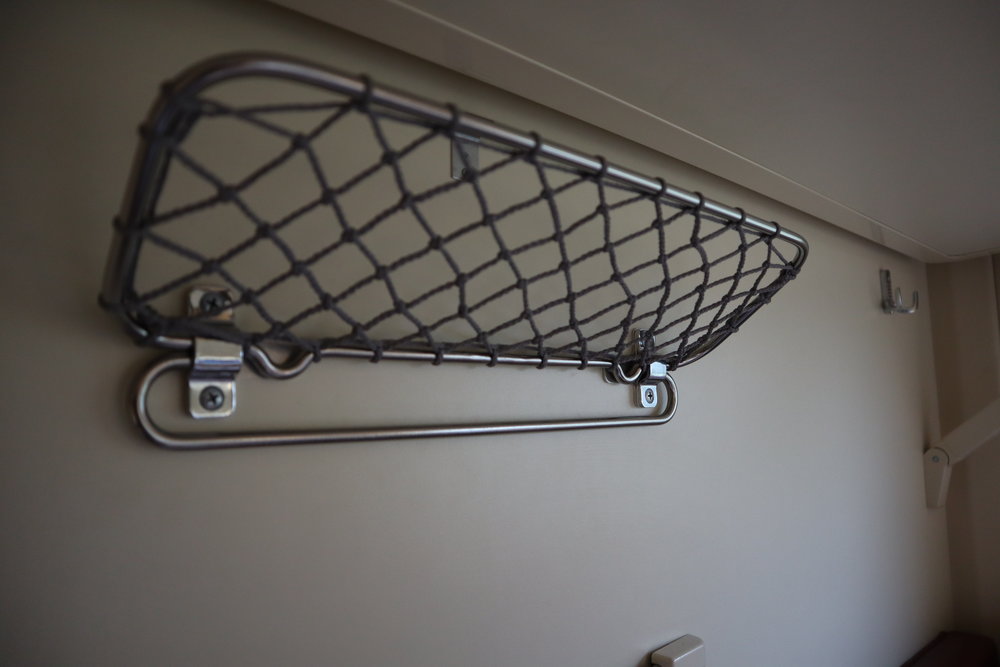
Trans-Siberian Railway Third Class – Storage nets
Then you have power ports located underneath the table, which are a godsend for staying connected.
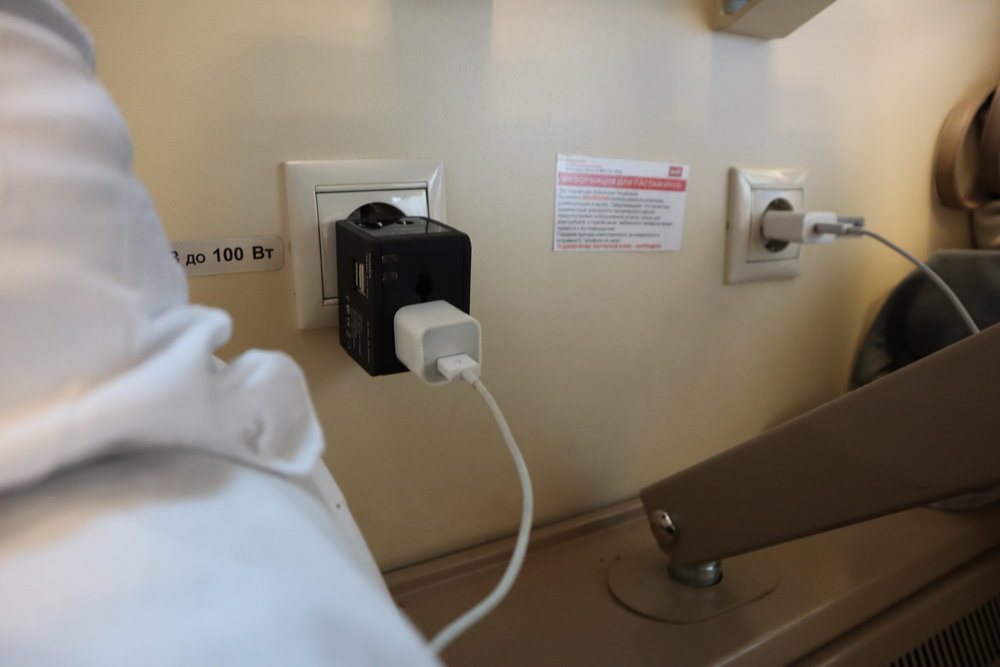
Trans-Siberian Railway Third Class – Power ports
The four occupants of each compartment share access to the window, and there’s a blackout shade that can be raised or lowered. People on the train tend to sleep at varying hours, so I noticed that most window shades remained open throughout the duration of the journey. Jessica and I didn’t mind too much anyway, since we had come prepared with the sleep masks we had been given from our previous flights in business class!
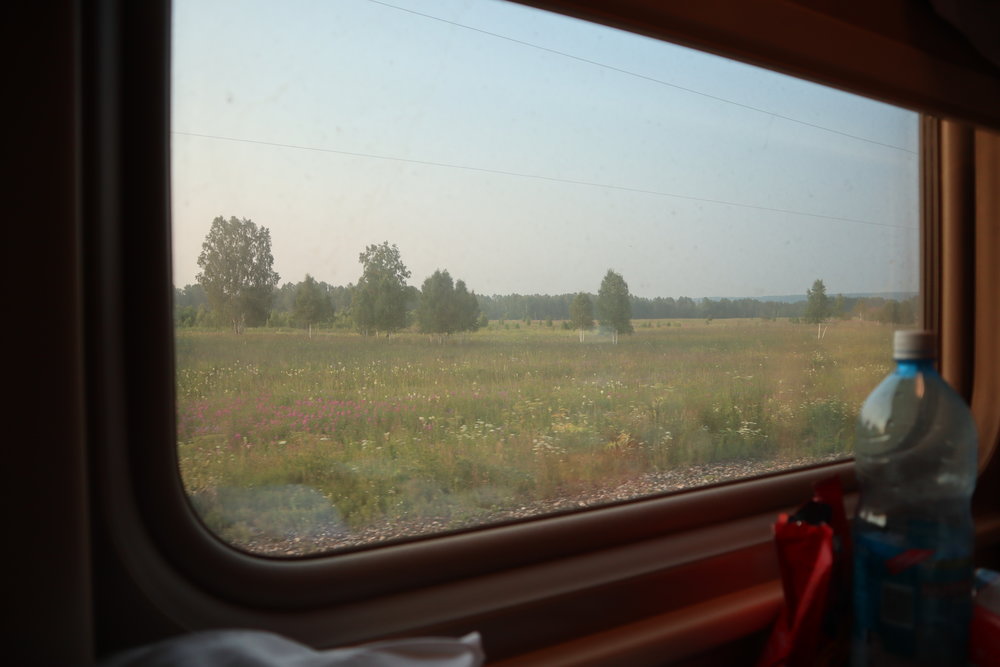
Trans-Siberian Railway Third Class – Window
Indeed, the nature of the Trans-Siberian Railway is that passengers are getting on and off the train around the clock, meaning that you might be ready to doze off for the night whilst the passengers opposite you are wide awake.
Therefore, I’d say that bringing a sleep mask with is essential, or else you’ll end up like this poor soul, desperately trying to fall asleep amidst the morning hubbub on the train…
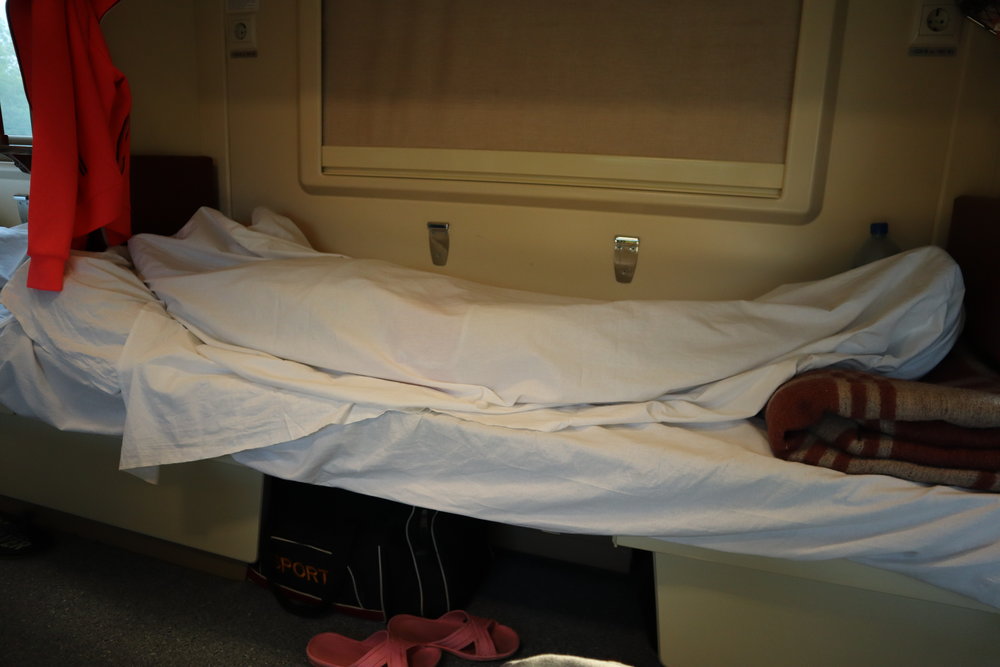
Trans-Siberian Railway Third Class – Struggling sleeper
Due to a combination of jetlag and World Cup excitement, Jessica and I had stayed awake the entire night previously, so we were ready to get some shut-eye as soon as we boarded. Before that, I quickly went to the bathroom to freshen up.
Prior to embarking on this trip, the state of the train bathrooms had been my biggest concern. I had pictured an environment of filth and squalor, having previously experienced such conditions on many long-distance train rides in China.
The bathrooms in First Class had been decent enough, but this was Third Class, where at least three times the number of passengers would be sharing the facilities. So how did it turn out?
Well, I was surprised, both positively and negatively. Positively, because the bathrooms looked virtually the same as they do in First Class, and were being diligently maintained by the provodnitsa, the train attendant who takes care of the carriage.
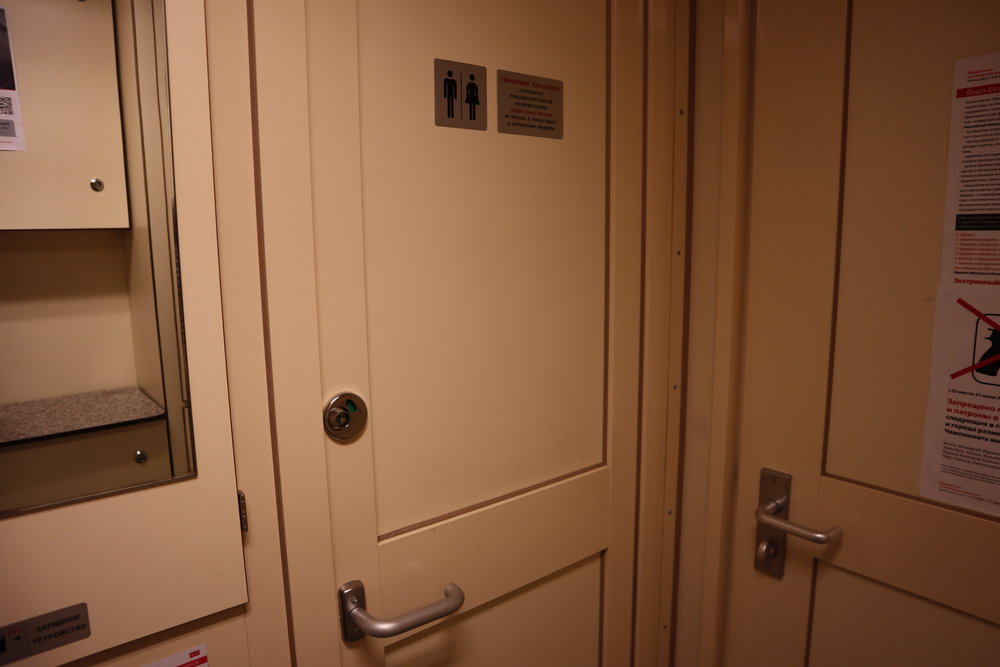
Trans-Siberian Railway Third Class – Bathroom
Just like the Rossiya train that I had previously taken, this train had a simple bathroom setup with a sink and toilet. The mats on the ground ensured that your shoes never got too dirty, since any wastewater would simply spill through the drain and onto the tracks below.
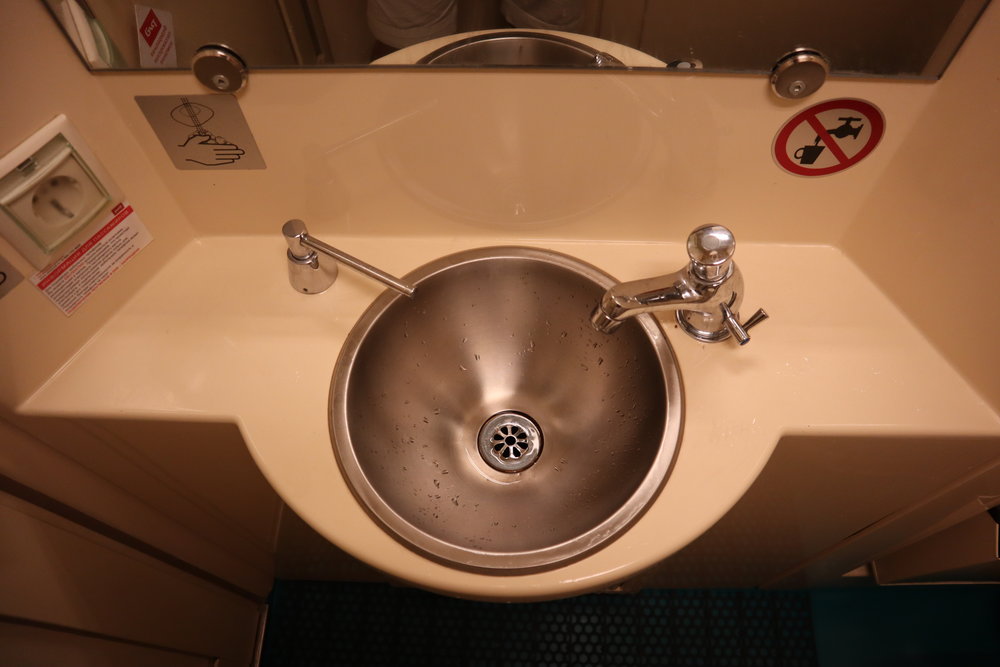
Trans-Siberian Railway Third Class – Sink
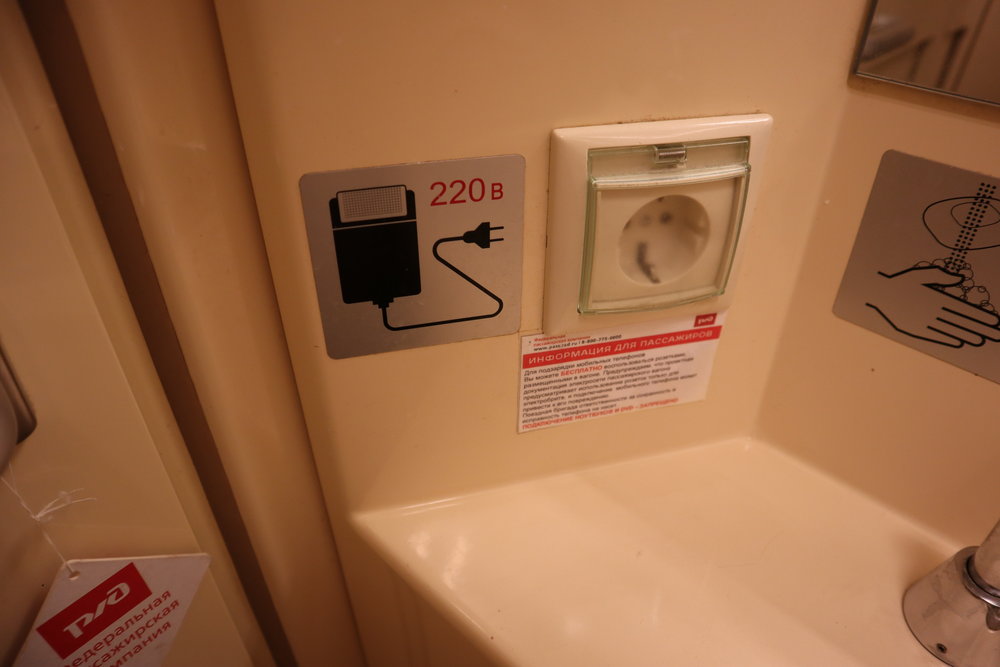
Trans-Siberian Railway Third Class – Bathroom power ports
Negatively, because of the unbelievable stench in the bathroom.
It amazed me how stark of a difference there was in that regard – the First Class bathrooms had smelled perfectly fine, but this one smelled absolutely disgusting.
It was difficult to breathe in there. Moreover, it was a stench so strong that you just knew it had been a part of these train bathrooms for a long, long time, and was never going to disappear!
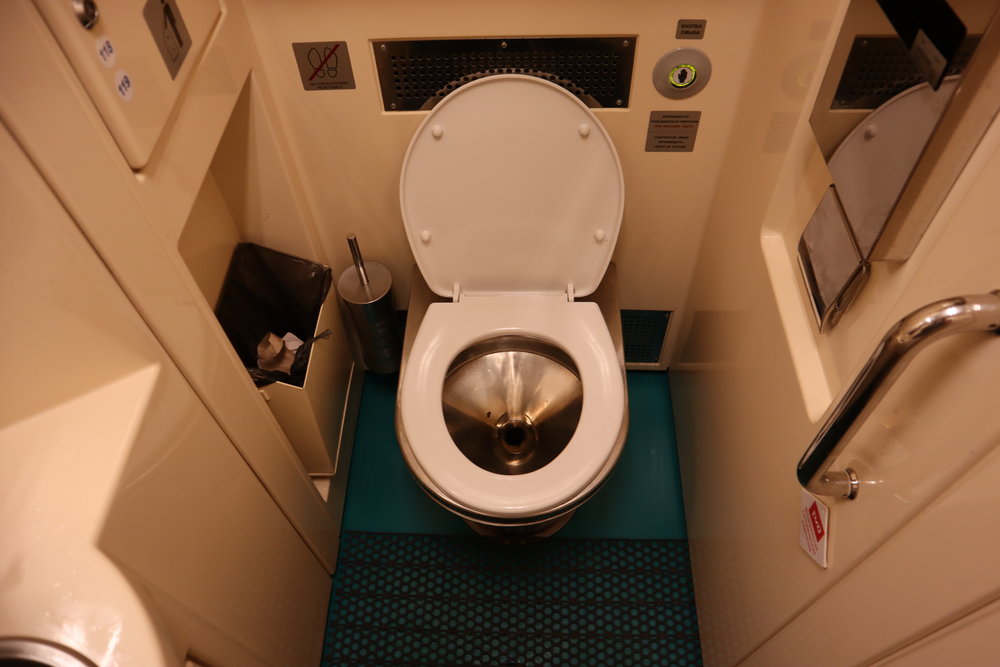
Trans-Siberian Railway Third Class – Toilet
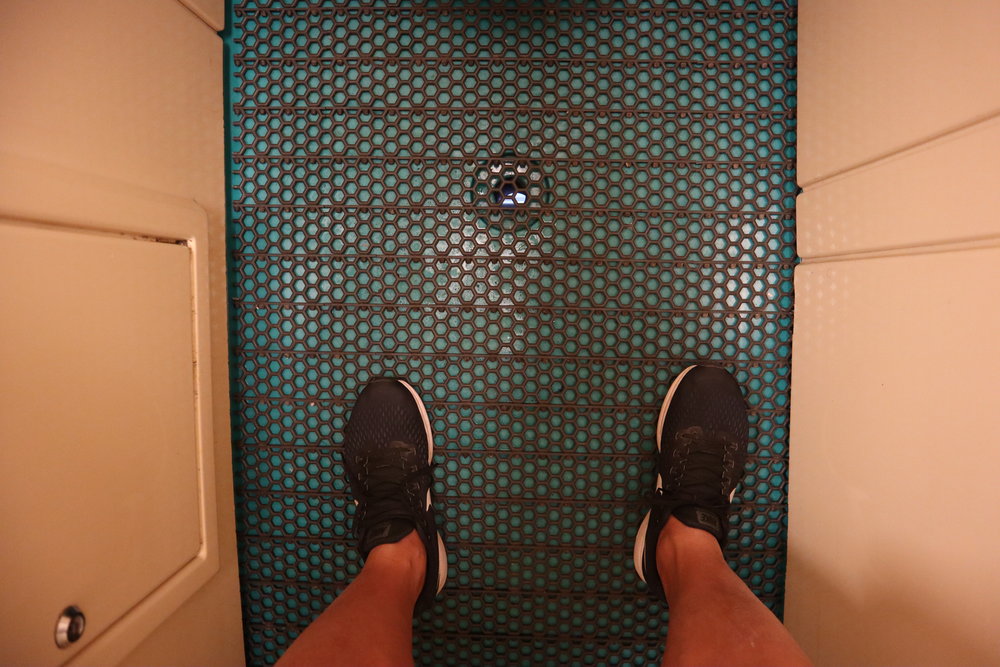
Trans-Siberian Railway Third Class – Drainage
As our train was leaving the outskirts of Novosibirsk, I returned to my bed and prepared to go to sleep. The other two passengers in our compartment – two friendly old Russian ladies – were fully awake by this point and getting their breakfast started, so it took me a while to fall asleep. Eventually, though, the fatigue took over, and I fell into a long, deep slumber.
My body clock was all over the place, and there was also plenty of commotion in the train throughout the day, so I woke up for a few brief flashes before falling asleep again. Eventually, I woke up for long enough to check my phone and, to my shock, a full 10 hours had passed!
Just like that, it was now mid-afternoon, and one-third of the journey was gone.
Jessica awoke soon after as well, and we gathered on the bottom bunk to eat “breakfast” or whatever meal it was. There’s no real sense of the usual three meals a day when you’re travelling on long-distance trains. Instead, you simply eat whenever your body clock demands it, which might well be at odd hours given that you’re sedentary for most of the time and aren’t moving around much at all.
We had come onboard with a fully-stocked bag of snacks, including two bowls of instant noodles each. As usual, the hot water boiler was located at the end of each carriage, and if we hadn’t come prepared, we could’ve purchased snacks and instant noodles from the provodnitsa as well.
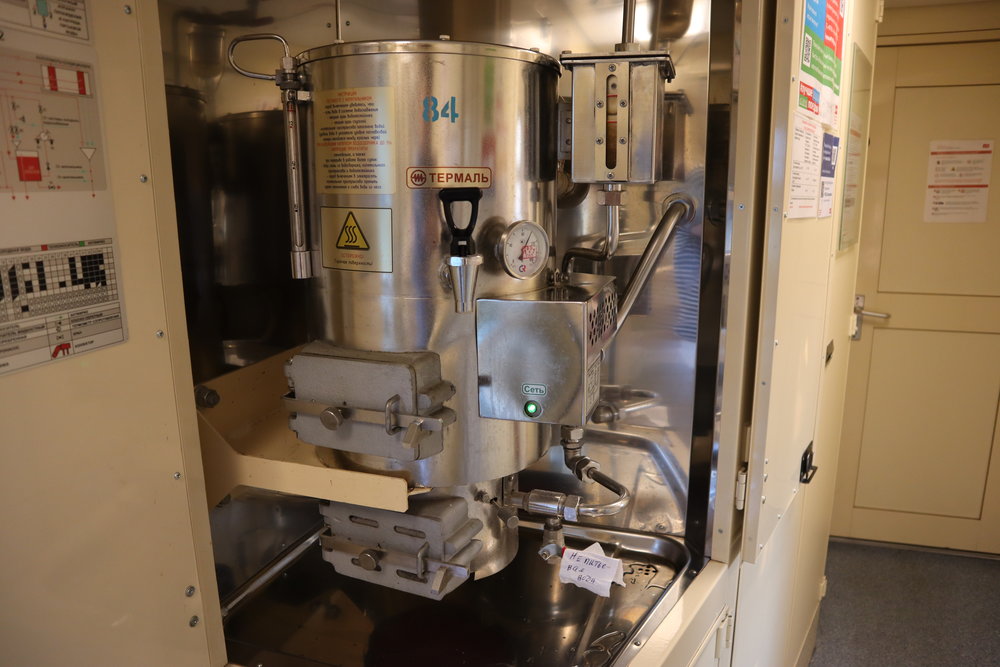
Trans-Siberian Railway Third Class – Hot water boiler
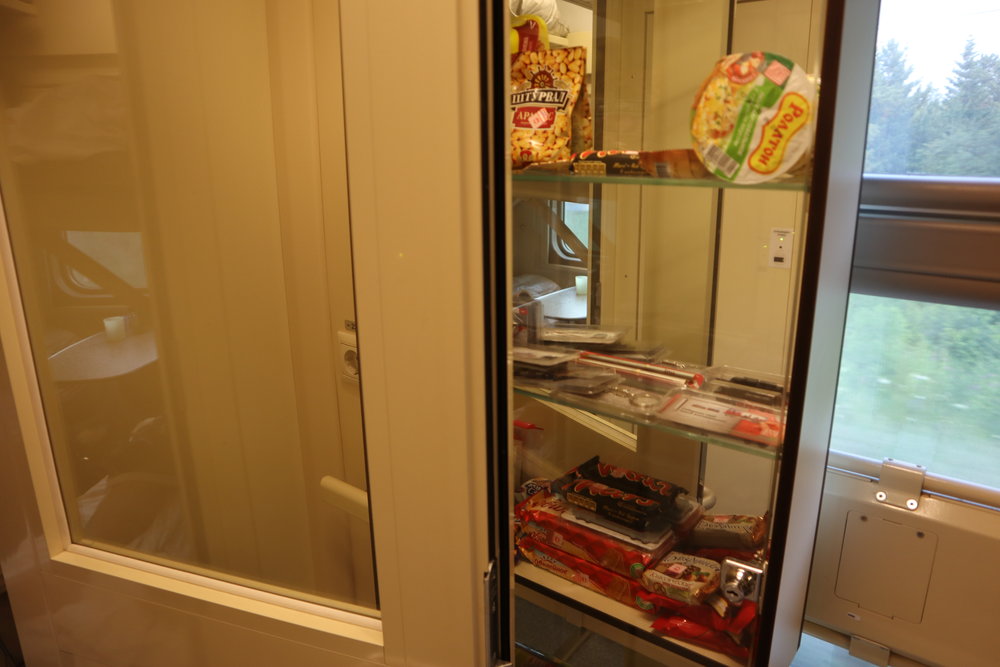
Trans-Siberian Railway Third Class – Snack bar
We could’ve also headed to the restaurant car as well during the journey, but we stuck to instant noodles instead. Somehow, eating instant noodles just seemed to be the quintessential thing to do when travelling vast distances by train; besides, now that we were travelling in Third Class rather than First Class, we wouldn’t get any complimentary meals in the restaurant car either.
Krasnoyarsk – one of the major cities along this route – passed us by just as we emerged from our sleep, so we didn’t get a chance to get off the train for a breather. The next opportunity came at Ilansky about an hour later.
The onboard train schedule was useful for figuring out how long it’d be until the next stopping-off point.
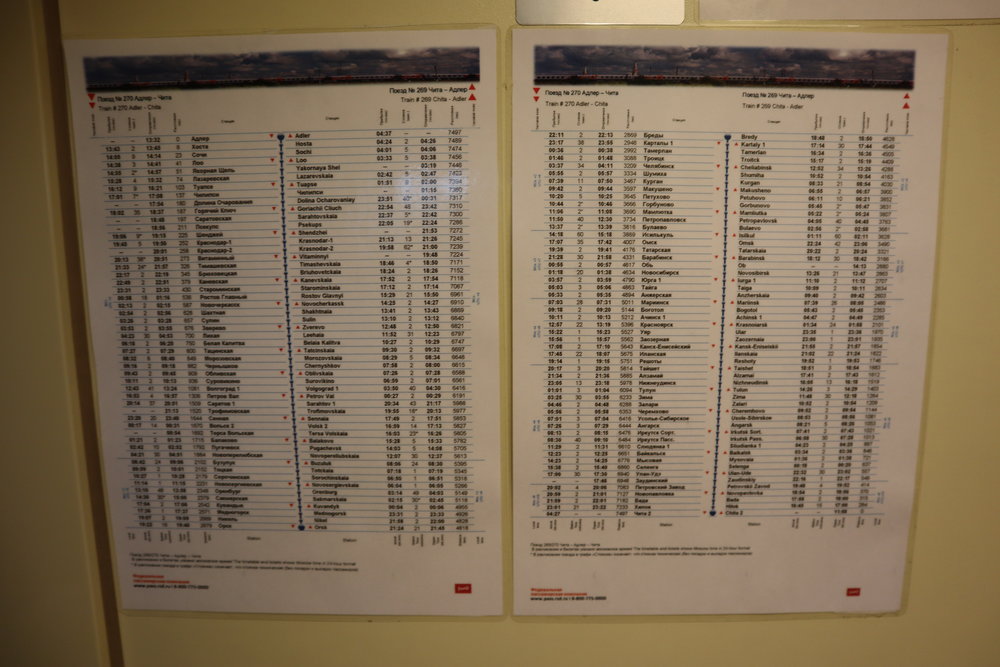
Trans-Siberian Railway Third Class – Train schedule
The train station at Ilanksy was drastically different from our previous pit stops. Western Russia has a higher concentration of major cities and population centres, whereas the deeper you go into Siberia, the more you find tiny settlements with a few thousand inhabitants and not much else going on.
Ilansky Railway Station
Let’s talk about the smells and odours on the train carriage. With over 50 people cramped together, eating, sitting, and sleeping in close proximity to each other, there’s bound to be a distinctive smell of humans permeating through the cabin. Nevertheless, your nose quickly grows accustomed to it, and it’s not until you hop off the train for some fresh air and get onboard once again that the smell fully hits you.
We still had about 16 hours to go until Irkutsk – the biggest challenge along these long-haul train rides is definitely keeping yourself occupied so you don’t go crazy! We mainly just relaxed on our respective bunks, reading books, typing up blog posts, watching Netflix, and snacking on chips and gummy bears. The 3G reception on our phones was spotty, but we were able to use the internet every now and then as well.
I will say that Third Class definitely isn’t very conducive to spreading out and getting comfortable. Jessica and I found ourselves getting in each other’s space when we sat on the bottom bunk together, so pretty soon she headed back up to the top bunk to hang out on her own.
By the time midnight rolled around, most of the fellow passengers had gone to sleep, but I was still wide awake. I must’ve finally fallen asleep at about 5am, after another late-night bowl of instant noodles and about a dozen podcast episodes!
On the bright side, I managed to sleep much more peacefully this time around, having grown accustomed to that hypnotic badum-badum rhythm of the train. And by the time I awoke the next day, we were already within Irkutsk’s city limits, bringing our journey on the Third Class carriages of the Trans-Siberian Railway to a merciful end.
Conclusion
Life as a Third Class citizen isn’t unpleasant per se, but it’s certainly nothing glamorous either. There’s all the essential stuff available to you onboard the train, but then there’s also the bare-bones surroundings and a stench in the bathroom that will stay with you long after you’ve disembarked.
But of course, glamour is not what it’s all about – rather, it’s about getting to experience how ordinary Russians travel around the country, and I’m glad we did that. It was now time to head for the last frontier of this Russian trip: Lake Baikal, the “pearl of Siberia” and the largest, deepest, and oldest lake in the world.


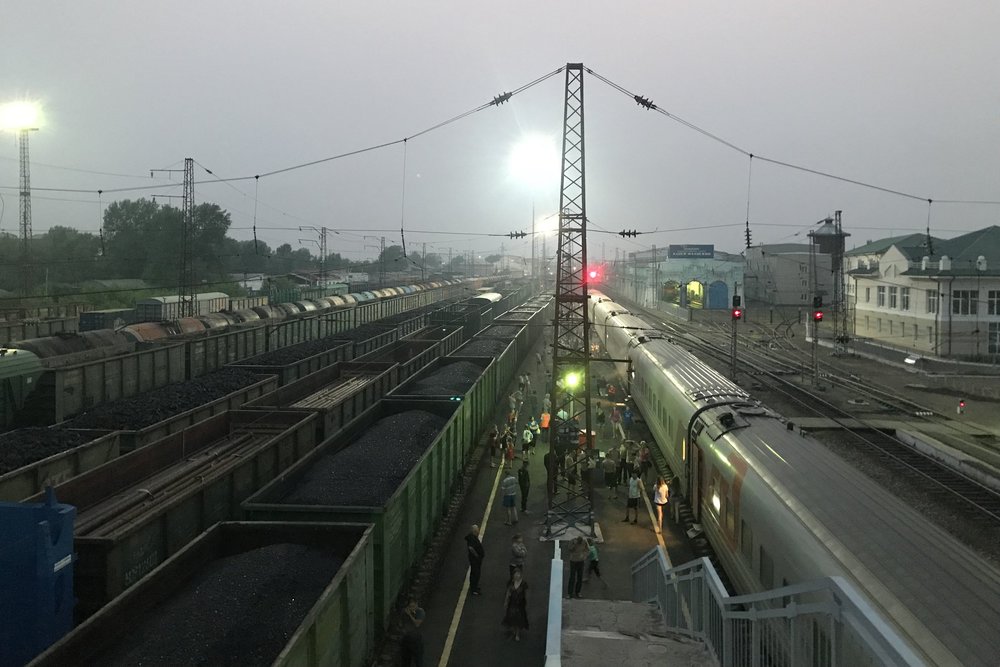
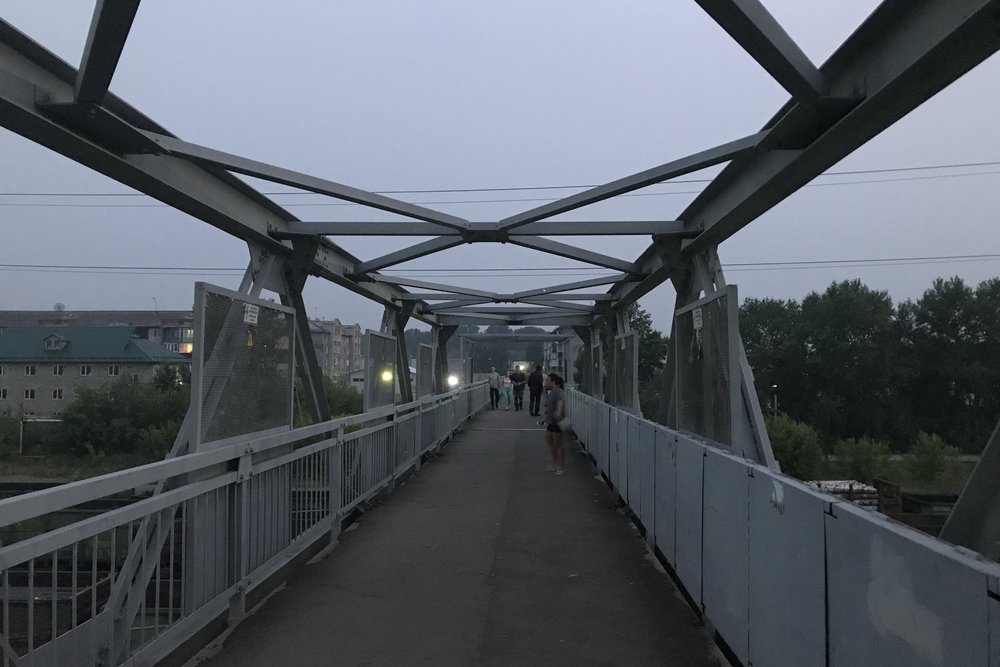
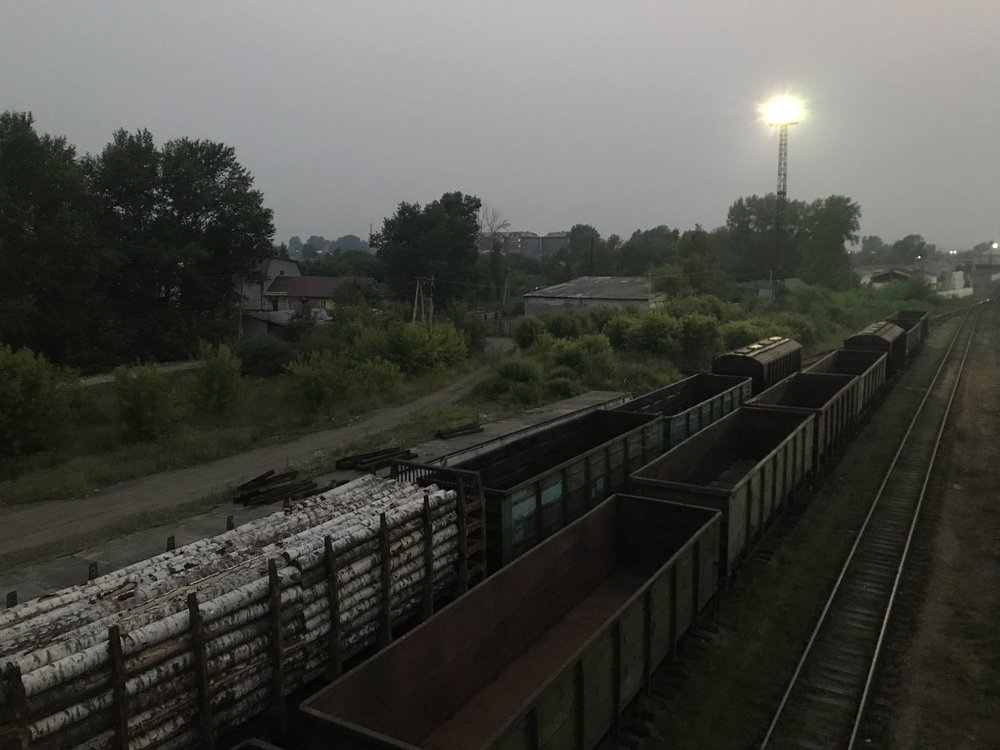
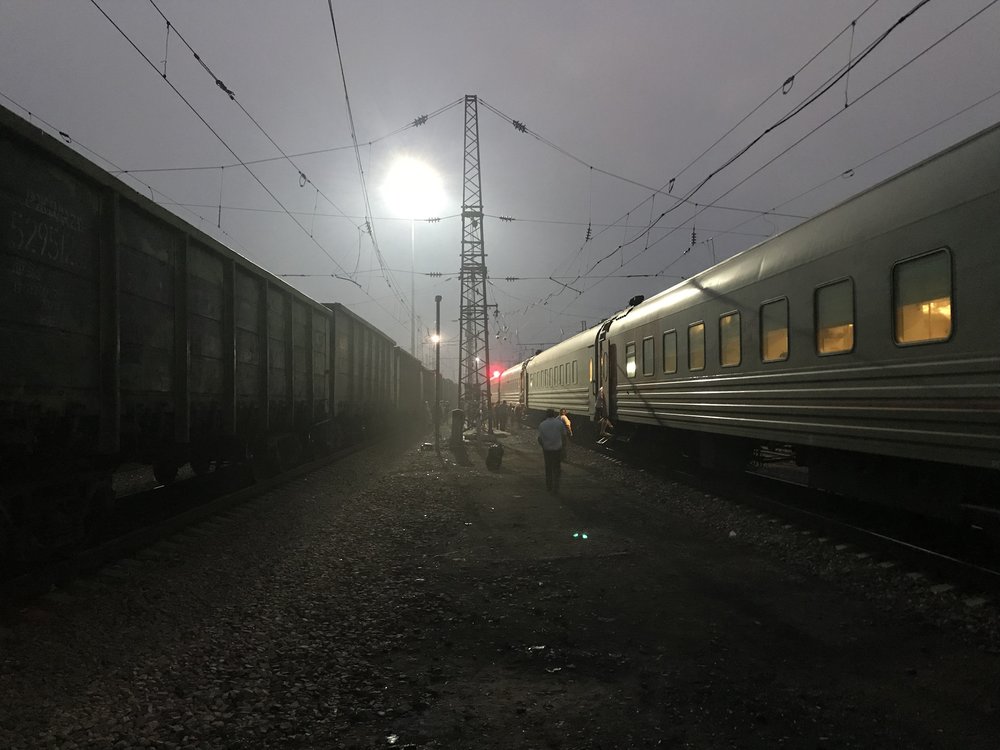













I have to admit Ricky, that you are welcome to the 3rd class berths. The first class seemed great but this next part …………..oh my!